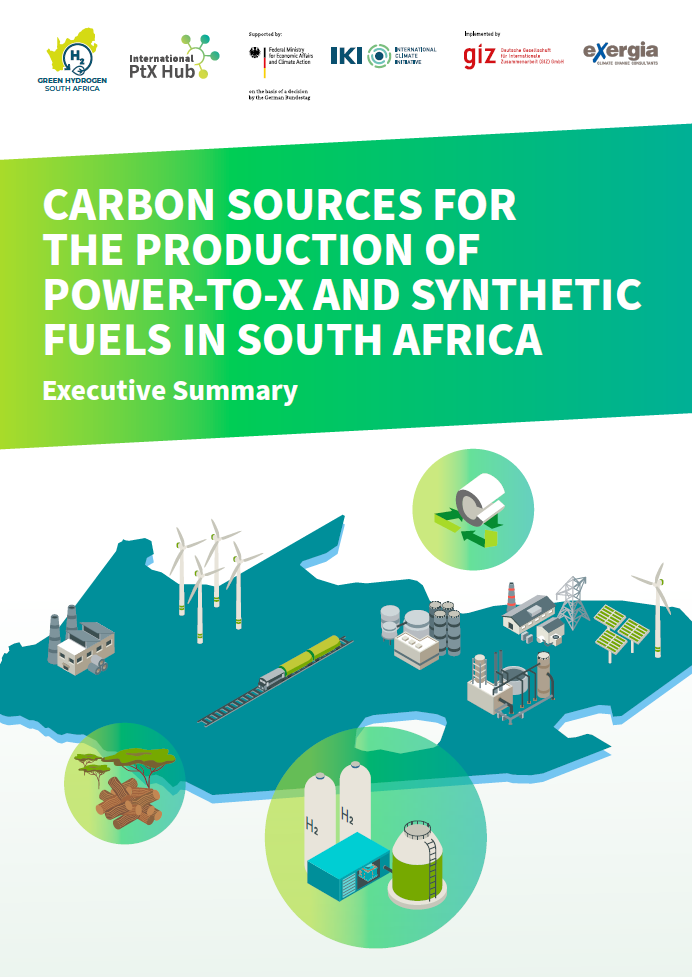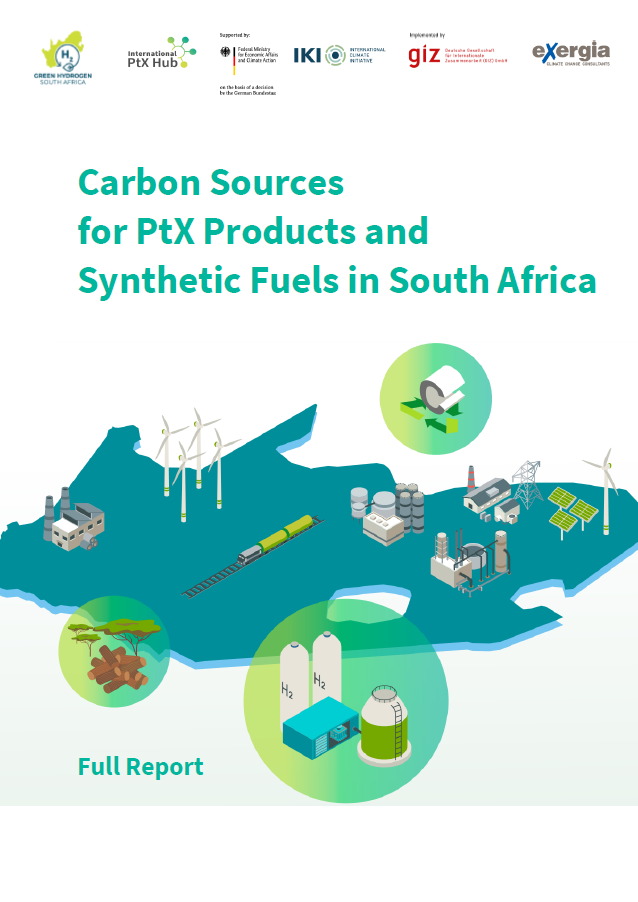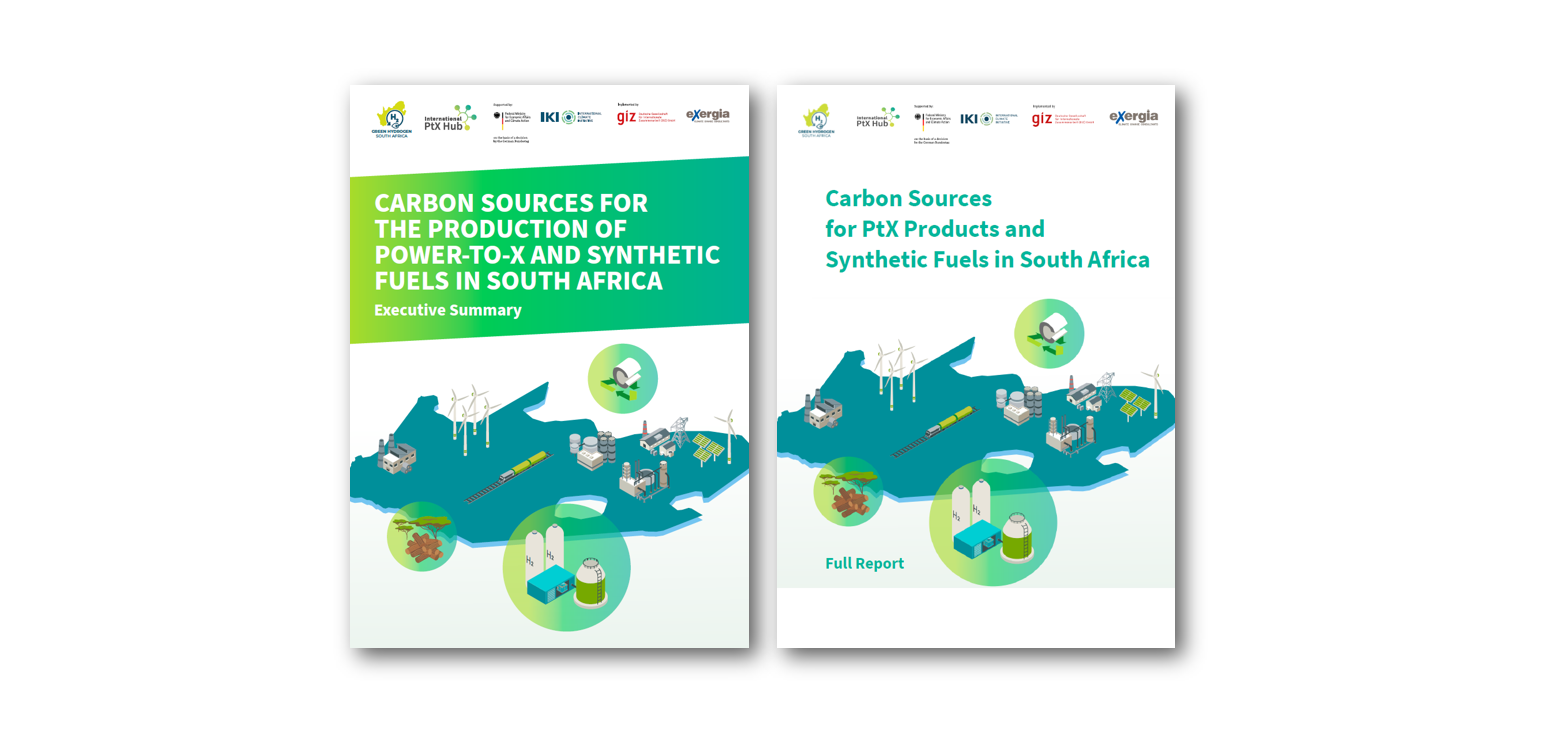Renewable energy is abundant – it is sustainable carbon that is the limiting factor for Power-to-X production. Therefore, this new study analyses how much carbon is available in South Africa for PtX production by identifying existing carbon dioxide (CO2) point sources in South Africa and assessing the technical feasibility of Carbon Capture (CC) technologies to extract CO2 from these sources.
Key findings on carbon availability in South Africa
- South Africa’s carbon sources (assuming that renewable hydrogen will be available on a large scale) would be sufficient to sustainably produce at least 81 million litres of synthetic kerosene in 2030 and 65 million litres in 2050.
- If South Africa were to replace all projected fossil fuel consumption with locally produced synthetic fuel, there would be enough available CO2 from its industrial point sources to meet this domestic demand.
- There is also a significant surplus of CO2 that could be used for exports.
- However, if only captured CO2 from unavoidable industrial processes is considered, there may not even be enough to meet the projected domestic demand for liquid transport fuels.
- It is therefore critical that standards and regulations are developed to define sustainable carbon sources and that carbon based synthetic fuels are prioritised where direct electrification is not feasible today (for example in aviation or shipping).
The overall methodological approach of the study follows a demand and supply analysis: it looks at domestic supply as well as domestic and international demand for CO2 as a feedstock for PtX products from the power, petrochemical, cement, and steel sectors in South Africa.
Take a look at the executive summary and full-length study in our Knowledge Base:


